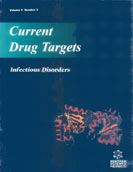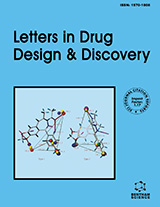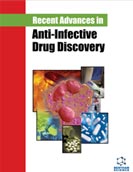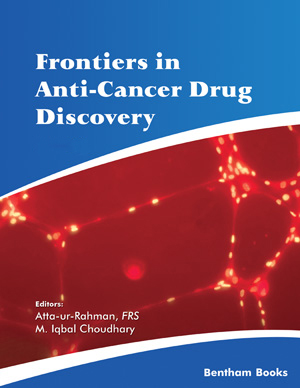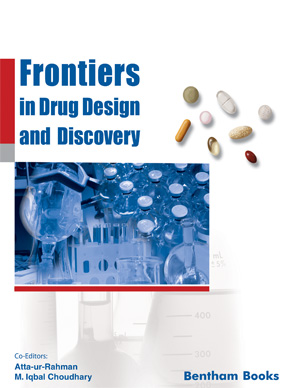Abstract
Inflammatory lung diseases such as asthma and Chronic Obstructive Pulmonary Disease (COPD) are characterised by systemic and local chronic inflammation and oxidative stress. The sources of the increased oxidative stress in patients with asthma and COPD derive from the increased burden of inhaled oxidants, and from the increased amounts of reactive oxygen species (ROS) generated by several inflammatory, immune and structural cells of the airways. Increased levels of ROS produced in the airways are reflected by increased markers of oxidative stress in the airspaces, sputum, breath, lungs and blood in patients with asthma and COPD. ROS, either directly or via the formation of lipid peroxidation products such as acrolein, 4-hydroxy-2-nonenal and F2-isoprostanes, may play a role in enhancing the inflammation through the activation of stress kinases (JNK, MAPK, p38, phosphoinositide 3 (PI-3)-kinase / PI-3K-activated serine-threonine kinase Akt) and redox sensitive transcription factors such as NF-κB and AP-1. Recent data have also indicated that oxidative stress and pro-inflammatory mediators can alter nuclear histone acetylation / deacetylation allowing access for transcription factor DNA binding leading to enhanced pro-inflammatory gene expression in various lung cells. Furthermore, oxidative stress may alter the balance between gene expression of pro-inflammatory mediators and antioxidant enzymes in favor of inflammatory mediators in the lung. Thus, the presence of oxidative stress may have important consequences for the pathogenesis of asthma and COPD. Identification of genes that predispose to the development of asthma and COPD may identify novel therapeutic targets. Future work is directed to understand the molecular mechanisms of antioxidants on ROS-mediated cell signaling pathways and inhibition of inflammatory response that would provide information for the development of novel antioxidant therapeutic targets in asthma and COPD. Effective wide spectrum antioxidant therapy that has good bioavailability and potency is urgently needed to control the localised oxidative and inflammatory processes that occur in the pathogenesis of asthma and COPD. In addition, development of such novel antioxidant compounds would be therapeutically useful in monitoring the oxidative and inflammatory biomarkers in the progression / severity of asthma and COPD.
Keywords: Reactive Oxygen Species, reactive nitrogen species, lipid peroxides, histone acetylation, deacetylases, corticosteroids, antioxidants, Chronic Obstructive Pulmonary Disease, asthma, lungs
Current Drug Targets - Inflammation & Allergy
Title: Oxidative Stress and Gene Transcription in Asthma and Chronic Obstructive Pulmonary Disease: Antioxidant Therapeutic Targets
Volume: 1 Issue: 3
Author(s): Irfan Rahman
Affiliation:
Keywords: Reactive Oxygen Species, reactive nitrogen species, lipid peroxides, histone acetylation, deacetylases, corticosteroids, antioxidants, Chronic Obstructive Pulmonary Disease, asthma, lungs
Abstract: Inflammatory lung diseases such as asthma and Chronic Obstructive Pulmonary Disease (COPD) are characterised by systemic and local chronic inflammation and oxidative stress. The sources of the increased oxidative stress in patients with asthma and COPD derive from the increased burden of inhaled oxidants, and from the increased amounts of reactive oxygen species (ROS) generated by several inflammatory, immune and structural cells of the airways. Increased levels of ROS produced in the airways are reflected by increased markers of oxidative stress in the airspaces, sputum, breath, lungs and blood in patients with asthma and COPD. ROS, either directly or via the formation of lipid peroxidation products such as acrolein, 4-hydroxy-2-nonenal and F2-isoprostanes, may play a role in enhancing the inflammation through the activation of stress kinases (JNK, MAPK, p38, phosphoinositide 3 (PI-3)-kinase / PI-3K-activated serine-threonine kinase Akt) and redox sensitive transcription factors such as NF-κB and AP-1. Recent data have also indicated that oxidative stress and pro-inflammatory mediators can alter nuclear histone acetylation / deacetylation allowing access for transcription factor DNA binding leading to enhanced pro-inflammatory gene expression in various lung cells. Furthermore, oxidative stress may alter the balance between gene expression of pro-inflammatory mediators and antioxidant enzymes in favor of inflammatory mediators in the lung. Thus, the presence of oxidative stress may have important consequences for the pathogenesis of asthma and COPD. Identification of genes that predispose to the development of asthma and COPD may identify novel therapeutic targets. Future work is directed to understand the molecular mechanisms of antioxidants on ROS-mediated cell signaling pathways and inhibition of inflammatory response that would provide information for the development of novel antioxidant therapeutic targets in asthma and COPD. Effective wide spectrum antioxidant therapy that has good bioavailability and potency is urgently needed to control the localised oxidative and inflammatory processes that occur in the pathogenesis of asthma and COPD. In addition, development of such novel antioxidant compounds would be therapeutically useful in monitoring the oxidative and inflammatory biomarkers in the progression / severity of asthma and COPD.
Export Options
About this article
Cite this article as:
Rahman Irfan, Oxidative Stress and Gene Transcription in Asthma and Chronic Obstructive Pulmonary Disease: Antioxidant Therapeutic Targets, Current Drug Targets - Inflammation & Allergy 2002; 1 (3) . https://dx.doi.org/10.2174/1568010023344607
| DOI https://dx.doi.org/10.2174/1568010023344607 |
Print ISSN 1568-010X |
| Publisher Name Bentham Science Publisher |
Online ISSN 1568-010X |
 12
12Related Articles
-
The CLCA Gene Family: Putative Therapeutic Target for Respiratory Diseases
Inflammation & Allergy - Drug Targets (Discontinued) Asthma Management by Lebanese Specialists
Current Respiratory Medicine Reviews Granulomatous Lung Disease. Disease for Pulmomologists: Diagnosis and Treatment
Current Respiratory Medicine Reviews Host Molecular Defense Mechanisms Against Chlamydophila pneumoniae and Genetic Studies of Immune-Response-Related Genes in Asthma
Recent Patents on Inflammation & Allergy Drug Discovery Strain Typing of Mycoplasma pneumoniae and its Value in Epidemiology
Current Pediatric Reviews Protein Kinase C-theta Inhibitors: A Novel Therapy for Inflammatory Disorders
Current Pharmaceutical Design A Medicinal Mushroom: Phellinus Linteus
Current Medicinal Chemistry Advances in Asthma and COPD Treatment: Combination Therapy with Inhaled Corticosteroids and Long-Acting β2-Agonists.
Current Pharmaceutical Design Novel Strategies and Model Studies for Colon Targeted Drug Delivery
Drug Delivery Letters Aquaporin-1 and Sodium-Hydrogen Exchangers as Pharmacological Targets in Diabetic Atherosclerosis
Current Drug Targets Nucleic Acid-based Molecular Treatment of Allergy
Current Medicinal Chemistry - Anti-Inflammatory & Anti-Allergy Agents Safety of Inhaled Fluticasone Propionate Therapy for Pediatric Asthma - A Systematic Review
Current Drug Safety New Oral Antihistamines in Pediatrics and Safety of Antihistamines in Children
Current Medicinal Chemistry - Anti-Inflammatory & Anti-Allergy Agents Immunomodulatory Treatment Strategies for Allergic Diseases
Current Drug Targets - Inflammation & Allergy Novel Functions and Binding Mechanisms of Carbohydrate-Binding Proteins Determined by Force Measurements
Current Protein & Peptide Science Matrix Metalloproteinase-9 and Airway Remodeling in Asthma
Current Drug Targets - Inflammation & Allergy The Nutrigenetics and Pharmacogenetics of Vitamin D Pathways
Current Pharmacogenomics and Personalized Medicine The Effects of Allergen and Anti-Allergic Drugs on Murine Hemopoietic Cells: Moving Targets, Unusual Mechanisms, and Changing Paradigms
Current Drug Targets - Inflammation & Allergy In the Back Drop of Overuse of Synthetic Drugs, can Botanicals be One of the Answers: A Pilot Study on the Medicinal Use of Chlorophytum and Curcuma by Tribals of Central India
Current Traditional Medicine Bamboo a Supplement to Human Health: A Comprehensive Review on its Ethnopharmacology, Phytochemistry, and Pharmacological Activity
The Natural Products Journal


